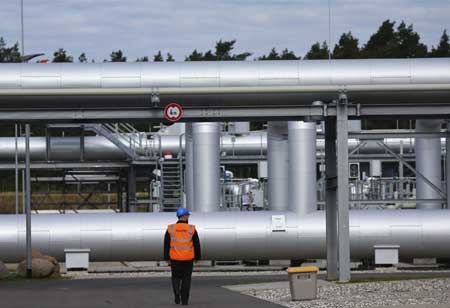Thank you for Subscribing to Energy Business Review Weekly Brief
Benefits of Pipeline Management
Pipeline development helps in transporting crude oil and natural gas from its sources, like wells, into the market space and is thus highly crucial for the energy sector.

By
Energy Business Review | Monday, May 22, 2023
Stay ahead of the industry with exclusive feature stories on the top companies, expert insights and the latest news delivered straight to your inbox. Subscribe today.
Developing pipelines in the energy system facilitates seamless advantages, wherein, implementing them often requires critical consideration.
FREMONT, CA: Pipeline development helps in transporting crude oil and natural gas from its sources, like wells, into the market space and is thus highly crucial for the energy sector. Critical management of pipeline sources in the energy arena offers induced benefits—increased production and safety; reduced environmental impact and carbon footprint; increased safety; and decreased reliance on foreign oil. For instance, effective pipeline sourcing increases production via effective transportation of increased oil and gas to the market, benefitting both the energy enterprise and consumer on a simultaneous note.
Pipeline resources are often environmentally friendly, unlike other methods of oil and gas transportation, deploying reduced energy and producing few or no emissions in the process. That is, pipelines offer reduced carbon emissions with induced safety and, thus, are emerging as an effective form of transportation. They are built from sturdy materials and possess a well-maintained system, in addition to reducing Europe’s reliance on foreign nations for crude oil and natural gas transportation into the market.
Implementing pipeline resources in an arena often requires distinct consideration and increased effort, as pipelines are often software development lifecycle models, organising various stages of software development. It ensured quality through the integration of varied stages—the requirement gathering phase, a design phase, a development phase, and a testing phase. However, business leaders in the arena ought to analyse the development goals of the entire team and its resources, in addition to scaling its timelines, skills, and experience, for an effective planting of pipeline sources.
Requirements in constructing and structuring pipelines ought to be defined and undertaken for consideration, as it tames the development procedure in addition to ensuring that team expectations for the net result are met on an adequate note. Planning a project in distinct stages enables the breaking down of the data into manageable chunks, especially to complete the plan per desired time and resources in the arena. As a result, avoiding overscheduled procedures facilitates the production of a high-quality product.
Likewise, deploying prototyping capabilities and user feedback in the development procedure ensures the high and well-established quality of the final net products, meeting the desired expectations of the team. It also eliminates delays in structuring projects, especially in the final stage. Alongside this, harnessing automated testing and quality assurance tools also ensures that the desired expectations of the team are met in a well-established high quality, avoiding hindrances like delays in processing the projects for an effective and timely outcome.






